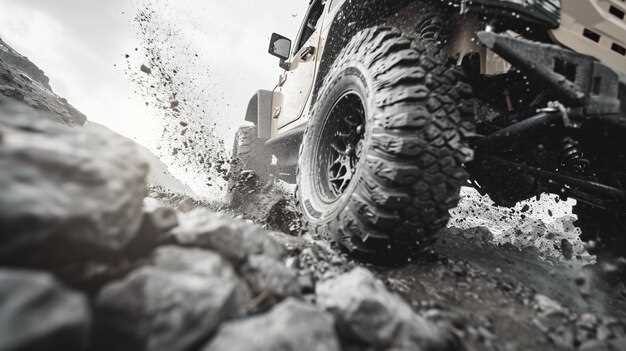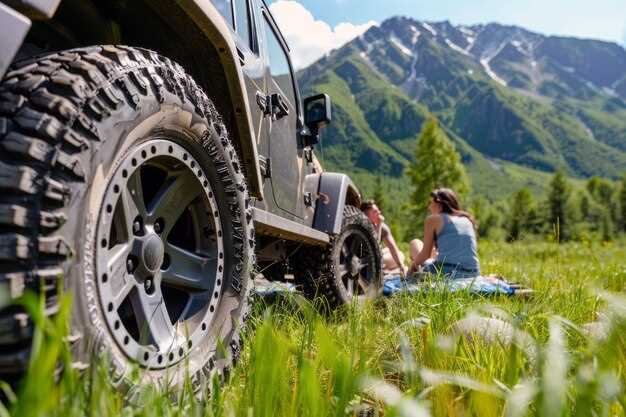
Off-road driving presents unique challenges that ordinary vehicles may struggle to overcome. To tackle rough terrains, steep inclines, and unpredictable obstacles, drivers often turn to suspension upgrades that enhance their vehicle’s performance. These modifications not only improve handling and comfort but also significantly boost the durability and resilience of off-road vehicles.
Upgrading your suspension system can transform your driving experience, allowing for better shock absorption, increased ground clearance, and improved tire contact with the surface. When exploring the best suspension upgrades available, it’s crucial to consider options that not only meet your driving style but also match the specific terrain you’ll encounter.
In this article, we will explore some of the top suspension upgrades for off-road vehicles, focusing on features that set them apart and make them essential for serious adventurers. From coilover systems to leaf spring upgrades, each option offers distinct advantages tailored to enhance your vehicle’s off-road capabilities.
Choosing the Right Shocks for Enhanced Performance
Selecting the appropriate shocks is crucial for optimizing your off-road vehicle’s performance. The right shocks improve handling, comfort, and stability, allowing for a better driving experience over rough terrain.
There are primarily two types of shocks to consider: monotube and twin-tube. Monotube shocks offer better heat dissipation and performance due to their single-chamber design, making them ideal for off-road applications. Twin-tube shocks, while generally providing a smoother ride on pavement, may not perform as well under extreme off-road conditions.
Next, consider the shock’s damping characteristics. Adjustable shocks allow you to control the level of compression and rebound, providing flexibility for various terrains. Fixed damping shocks are simpler and often more cost-effective, but they do not offer the same level of customization.
It’s also essential to evaluate the shock absorber’s travel. Longer travel shocks provide better articulation, allowing your tires to maintain contact with the ground on uneven surfaces. This feature enhances traction and stability, significantly improving off-road capabilities.
Moreover, ensure compatibility with your vehicle’s weight and size. Heavier vehicles require shocks designed to handle additional stress. Consider the manufacturer’s recommendations for load capacity to avoid premature wear and performance issues.
Lastly, look for shocks made from high-quality materials. Aluminum bodies are commonly favored for their strength and lighter weight compared to steel, while corrosion-resistant coatings help prolong the lifespan of your shocks in harsh conditions.
By carefully selecting the right shocks based on these criteria, you can significantly enhance your off-road vehicle’s performance, ensuring a safer and more enjoyable driving experience on any terrain.
Installing a Lift Kit for Better Ground Clearance

Installing a lift kit is one of the most effective ways to enhance ground clearance on off-road vehicles. A lift kit raises the vehicle’s frame and suspension components, providing increased clearance between the undercarriage and the ground. This modification allows for better navigation over obstacles like rocks, logs, and uneven terrain, reducing the risk of damage to vital vehicle components.
Choosing the right lift kit depends on the vehicle type, intended use, and desired ride quality. Lift kits come in various types, including body lifts, suspension lifts, and leveling kits. Body lifts elevate the vehicle’s body from the frame, while suspension lifts replace or modify existing suspension components to increase height and improve articulation. Leveling kits provide a slight lift, often only on the front to eliminate factory rake.
The installation process typically involves raising the vehicle on a lift or jack stands. After ensuring safety, components are removed, followed by the installation of new parts according to the kit manufacturer’s guidelines. Common components include new springs, shocks, control arms, and brackets. Proper alignment post-installation is critical to ensure even tire wear and maintain handling characteristics.
After completing the installation, it’s recommended to test the vehicle in various conditions to evaluate performance and comfort. Increased ground clearance can also improve approach and departure angles, further enhancing off-road capability. However, it may affect the center of gravity, so careful driving and suspension adjustments may be necessary to optimize vehicle handling.
Finally, consider the potential impact on tire size. A lift kit provides an opportunity to upgrade to larger tires, which can further improve traction and grip. Overall, installing a lift kit not only boosts ground clearance but also enhances the overall off-road experience.
Improving Stability with Aftermarket Sway Bars

Aftermarket sway bars are essential for enhancing the stability of off-road vehicles, particularly when navigating challenging terrains. These components play a critical role in reducing body roll during cornering and uneven surfaces, providing a more controlled driving experience. By connecting the left and right suspension systems, sway bars help maintain tire contact with the ground, ensuring better traction and stability.
Upgrading to aftermarket sway bars typically involves selecting stiffer, adjustable options that allow drivers to fine-tune the handling characteristics of their vehicle. Stiffer sway bars reduce the amount of body roll, enabling more aggressive turns without compromising stability. This adjustment is particularly beneficial for off-road enthusiasts who frequently encounter sharp angles and uneven elevations.
Moreover, aftermarket sway bars are often designed with higher quality materials such as heavy-duty steel or aluminum, leading to increased durability and performance. These upgrades are typically lighter than stock versions and can improve the overall responsiveness of the suspension system. For off-road applications, the enhanced performance can mean the difference between smoothly traversing obstacles and experiencing unwanted sway and instability.
Installation of aftermarket sway bars can also provide additional benefits, such as improved alignment and better load distribution. This enhances the overall dynamics of the vehicle, making it more predictable in various driving conditions. Many aftermarket sway bars come with adjustable features that allow for customization based on personal driving preferences or specific off-road demands.
In summary, investing in aftermarket sway bars is a highly effective method to improve the stability of off-road vehicles. By providing better control, enhancing durability, and allowing for customization, these upgrades contribute significantly to a safe and enjoyable off-road experience.





